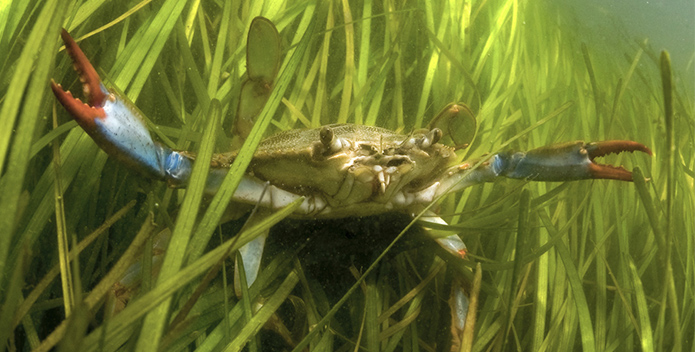Winter 2024
Officials Update Delegation on Bay's Future
Federal and state officials briefed members of the Maryland congressional delegation on September 25 on the need to maintain progress restoring the Bay in the next phase of the cleanup. The briefing occurred ahead of a December 10 meeting to discuss the next steps to take after the Bay states are expected to miss the 2025 deadline for achieving the goals of the 2014 Chesapeake Bay Watershed Agreement.
CBF is urging the six Bay state governors and the mayor of Washington, D.C., to attend this meeting of the Chesapeake Executive Council in person, formally recommit to the restoration partnership, and direct the council to update the 2014 agreement in line with the latest science by the end of next year.
The briefing was conducted by EPA Mid-Atlantic Region Administrator Adam Oritz, Interior Department Deputy Assistant Secretary for Fish, Wildlife, and Parks Matt Strickler, and Maryland Department of Natural Resources Secretary Josh Kurtz.
Bill Extending Bay Programs Advances Through Congress
Legislation to extend three important federal Bay programs advanced one step closer to becoming law when the House Natural Resources Committee approved it on September 19. The America's Conservation Enhancement (ACE) Reauthorization Ace would renew EPA's Chesapeake Bay Program, which coordinates the federal-state partnership to restore the Bay and its waterways; the Fish and Wildlife Service's Chesapeake Watershed Investments for Landscape Defense (WILD) grant program, which funds local habitat restoration efforts across the watershed; and the National Park Service's Chesapeake Gateways and Watertrails Network, which promotes greater public access to significant cultural, historic, and recreational sites in the Bay region.
The bill is co-sponsored by Representatives Rob Wittman (R-Va.) and Jen Kiggans (R-Va.) and endorsed by CBF. It still must be considered by the full House of Representatives. The Senate passed its version of the ACE Reauthorization Act in May. The Senate bill is co-sponsored by Senate Environment and Public Works Committee Chairman Tom Carper (D-Del.), Ranking Member Shelley Moore Capito (R-W.Va.), Senator Ben Cardin (D-Md.), and Senator Chris Van Hollen (D-Md.).
Coastal Habitat Conservation Act Passes House
Both chambers of Congress passed the Coastal Habitat Conservation Act, and it is on its way to the President to be signed into law. The bill would provide legal authority for the Fish and Wildlife Service's (FWS) Coastal Program, which focuses on protecting 24 coastal ecosystems, including the Chesapeake Bay. The popular voluntary program enables FWS to partner with landowners, tribes, and state and local governments on locally led efforts to conserve coastal fish and wildlife habitats across the country.
The Coastal Program was first established in the Chesapeake Bay in 1985. Since then, it has expanded to include coastal watersheds along the Atlantic and Pacific Oceans and in the Gulf of Mexico, the Great Lakes, and the Caribbean Sea. The Senate has not voted yet on the version introduced last year by Senator Ben Cardin (D-Md.).
—Keisha Sedlacek
Federal Director
Chesapeake Bay Foundation



